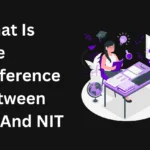The role of an Assistant Professor in India is both prestigious and pivotal, contributing significantly to the nation’s educational framework. Beyond the intrinsic rewards of shaping young minds, it’s essential to comprehend the financial and ancillary benefits associated with this position. This comprehensive guide delves into the salary structures, allowances, benefits, and factors influencing the compensation of Assistant Professors across India.
1. Overview of the Assistant Professor Role
Assistant Professors serve as the backbone of higher education institutions, engaging in teaching, research, and administrative duties. They play a crucial role in curriculum development, mentoring students, and advancing scholarly research. Their responsibilities often include:
- Delivering lectures and conducting seminars.
- Guiding undergraduate and postgraduate research projects.
- Publishing research papers in reputable journals.
- Participating in academic committees and contributing to institutional development.
2. Salary Structure as per the 7th Pay Commission
The 7th Pay Commission, implemented by the Government of India, restructured the pay scales for academic positions, including Assistant Professors. The revised pay matrix introduced a more streamlined structure, ensuring uniformity across central universities and colleges.
- Pay Band: ₹15,600 – ₹39,100
- Academic Grade Pay (AGP): ₹6,000
- Entry Pay: ₹57,700
- Pay Level: Level 10
This structure places Assistant Professors in the Pay Band 3 category, with an initial basic pay of ₹57,700 per month. Over time, with experience and promotions, the pay can escalate to ₹1,82,400 per month.
3. Detailed Salary Components
An Assistant Professor’s salary comprises several components beyond the basic pay:
- Basic Pay: The foundational salary as per the pay scale.
- Dearness Allowance (DA): A cost-of-living adjustment allowance, revised periodically to counteract inflation.
- House Rent Allowance (HRA): Allowance provided to cover housing expenses, varying based on the city of residence.
- Travel Allowance (TA): Compensation for travel-related expenses incurred during official duties.
For instance, as of the latest revisions, the DA is set at 50% of the basic pay, and the HRA ranges between 10% to 30% of the basic pay, depending on the city classification.
4. In-Hand Salary Estimation
Considering the various components, the in-hand salary of an Assistant Professor can be estimated as follows:
- Basic Pay: ₹57,700
- Dearness Allowance (50%): ₹28,850
- House Rent Allowance (20%): ₹11,540
- Travel Allowance: ₹3,600
Total Gross Salary: ₹101,690
After standard deductions such as Provident Fund (PF) and Professional Tax, the net in-hand salary would be approximately ₹88,237 per month.
5. Variations Based on Experience and Qualifications
Experience and academic qualifications significantly influence the salary trajectory of an Assistant Professor:
- Entry-Level (0-3 years): Approximately ₹2,61,500 per annum.
- Mid-Career (4-9 years): Around ₹4,71,800 per annum.
- Experienced (10-20 years): Approximately ₹7,64,300 per annum.
- Late-Career (Over 20 years): Up to ₹8,62,100 per annum.
These figures highlight the potential for salary growth with increased experience and contributions to academia.
6. Additional Benefits and Perks
Beyond the monetary compensation, Assistant Professors enjoy several benefits:
- Health Insurance: Comprehensive coverage for self and dependents.
- Retirement Benefits: Access to pension schemes and gratuity.
- Paid Leave: Entitlement to vacation, sick leave, and personal days.
- Professional Development: Funding for attending conferences, workshops, and further studies.
- Research Grants: Opportunities to secure funding for research projects.
These benefits enhance the overall compensation package and support the professional growth of Assistant Professors.
7. Factors Influencing Salary Variations
Several factors can cause variations in the salary of Assistant Professors:
- Institution Type: Central universities often offer higher pay scales compared to state or private institutions.
- Location: Metropolitan areas may provide higher HRA due to elevated living costs.
- Discipline: Fields with higher demand may offer better compensation packages.
- Additional Roles: Engaging in administrative duties or holding significant positions can lead to extra allowances.
Conclusion
The position of an Assistant Professor in India is not only academically fulfilling but also financially rewarding, especially in government and reputed private institutions. With the implementation of the 7th Pay Commission, salaries have become more structured, ensuring a steady career progression. The starting salary of an Assistant Professor typically ranges from ₹57,700 per month, with various allowances such as Dearness Allowance (DA), House Rent Allowance (HRA), and Travel Allowance (TA) significantly boosting the take-home pay.
Moreover, experience, qualifications, location, and institutional affiliation play a crucial role in determining the salary scale. Assistant Professors in central universities and prestigious institutes like IITs, IIMs, and NITs often receive higher compensation than their counterparts in state or private colleges.
Beyond the salary, the profession comes with numerous benefits such as health insurance, research grants, paid leaves, pension plans, and professional development opportunities. Additionally, academic professionals have well-defined career advancement paths leading to Associate Professor and Professor positions, bringing further financial and professional growth.
For those passionate about teaching, research, and contributing to the academic community, the role of an Assistant Professor in India offers job security, intellectual satisfaction, and long-term financial stability. While salaries may vary across institutions and regions, the profession remains a prestigious and rewarding career choice for aspiring academicians.











